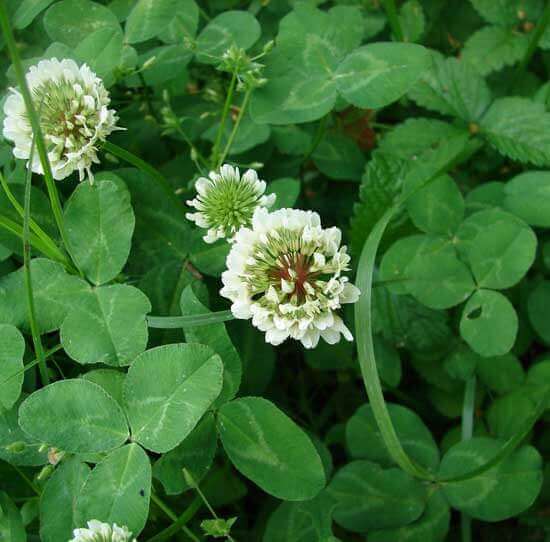
I mentioned in my post about building raised beds that I chose to add New Zealand white clover to the edges of the raised bed to act as a living mulch. First off, I should explain what a living mulch is, and how it differs from a cover crop:
“In agriculture, a living mulch is a cover crop interplanted or undersown with a main crop, and intended to serve the purposes of a mulch, such as weed suppression and regulation of soil temperature. Living mulches grow for a long time with the main crops, whereas cover crops are incorporated into the soil or killed with herbicides.”
Definition from Wikipedia.
6 Reasons Why I Chose Clover as a Living Mulch:
So essentially, what I’m doing is allowing the clover to grow on the edges of my raised beds initially. If it travels its way into the beds, that’s OK with me. Here’s why:
1. Less Weeding
It will prevent most weeds and grasses from forming on the walls of the raised bed
2. Retains Moisture
Just like normal mulches, the clover will retain moisture in the soil by absorbing all of the sun before it hits the soil
3. Withstands Traffic
It should be able to withstand the occasional traffic involved in reaching into the garden beds
4. Nitrogen Fixer
It will fix nitrogen into the soil, which in turn benefits the plants in the raised bed
5. Improves Soil Tilth
Clover’s root system improves the friability of soil almost immediately
6. Attracts Pollinators
Clover attracts bees, who will hopefully stick around and pollinate my fruiting vegetables as well as my nearby fruit trees & bushes
(These 6 reasons are also a great example of the permaculture concept of stacking functions – more on that later.)
But Isn’t Clover a Weed?
I have had a few people ask me why I would add clover to a yard, because they thought it was a weed. First off, clover is only a weed if your goal is 100% grass. If that’s your goal, read this article on how to have a beautiful organic lawn.
I personally like the appearance of clover better than grass. Clover does have aggressive tendencies: it spreads quickly and can block out other growth. My clover will be used in a place where it is surrounded by a wood chip pathway on one side, and a garden bed on the other. If the clover gets into the garden bed, that’s OK with me. I can always pull back the area of clover where I want a plant to be and then plant. In the meantime, all of the area covered with clover will be getting a dose of nitrogen and will be relatively protected from weeds.
Also, I mentioned in my post on raised beds that much of my current garden bed soil will eventually be moved around. When that happens, the clover will get mixed in as a normal cover crop would, and will improve the soil than as well.
Doesn’t It Compete With Other Plants for Nutrients?
Yes, a little bit, but that’s OK. First off, I take good care of my soil with plenty of organic materials and other natural amendments throughout the year, so the soil shouldn’t be lacking for nutrients. As mentioned above, if the clover ever gets in my way, I can just rip it out by the handful and whatever I’m planting will have plenty of space. Furthermore, I’m a firm believer that planting polycultures (many plants all grouped together) will always do better than monocultures (think big corn fields with nothing else growing).
On a side note, here’s a good read about polycultures being more productive than monocultures from a recent study at the Virginia Institute of Marine Science:
“…analysis shows that plant communities with many different species are nearly 1.5 times more productive than those with only one species (such as a cornfield or carefully tended lawn), and ongoing research finds even stronger benefits of diversity when the various other important natural services of ecosystems are considered. Diverse communities are also more efficient at capturing nutrients, light, and other limiting resources.”
(Source: ScienceDaily.com via Virginia Institute of Marine Science)
How to Plant the Clover:
I used a broadcast method (aka scattering the seeds) to add them to my raised bed walls. If you use a broadcast method, be certain to do it (A) in your rainy season when the heat is gone or (B) cover it with a light layer of soil. If the seeds dry out or sit in the sun to bake, they won’t germinate well. In my picture, you can see the seeds that fell into soil cracks were the only ones that performed well.
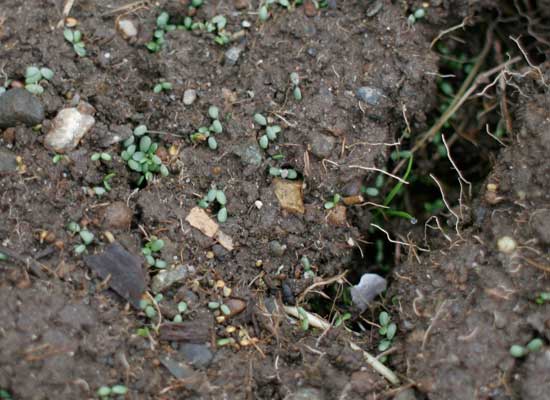
Where Did I Get This Idea?
There’s nothing new about it. People have been using clover as a cover crop for a long time. Masanobu Fukuoka wrote extensively about using white clover specifically as a living mulch, so he gets full credit for what I’m doing. Here’s a good article by permaculturalist Larry Korn (the man who translated Fukuoka’s book, The One-Straw Revolution, into English) about Fukuoka’s farming method.
Where Did I Get The Clover Seed?
I purchased 1 lb of it with my seed order at Territorial Seed Co. this year specifically for this purpose. The exact type I bought was New Zealand White Clover, which cost $11 per pound of seed.
More Information about New Zealand White Clover:
Territorial Seed Description: Trifolium repens – Growing to only 8 inches, this low perennial clover has a growth habit similar to White Dutch Clover but will stand drought conditions better, is more vigorous, and tolerates a wide range of soils. Used for both a spring and fall cover crop, New Zealand White Clover can be sown between row plantings or as a solid seeded cover. A terrific green manure as it fixes up to 170 pounds of nitrogen per acre and attracts beneficial insects. Sow 1/4 pound per 1000 square feet; 6–10 pounds per acre. Pre-inoculated.
Interesting White Clover Factoids:
- Initial taproot may grow to 3 feet deep.
- Regenerates itself both by seed and by spreading vegetative growth.
- Grows on a range of soils, but better on clay and loam than on sand.
- Decent tolerance of shade, heat, flooding, and drought (all important here in Seattle).
- Depending on moisture availability, can produce about 1 to 3 tons of dry matter per acre, containing 80 to 200 lbs of nitrogen per acre.
- When growing white clover, farmers should see immediate improvement in the top soil. White clover’s extensive root system make the soil more friable, improving tilth and water infiltration.
- Susceptible to potato leafhopper, meadow spittlebug, clover leaf weevil, alfalfa weevil, and lygus bug. Slugs will also attack white clover.
- Competition with your primary crops can be reduced by mowing and hand pulling back the clover. Competition may be higher during drought periods.
(Source: University of Hawai’i PDF, See Below)
For More Information on White Clover:
Excellent PDF Download from University of Hawai’i about White Clover: (Download Clover PDF)
Great Article on White Clover by Sustainable Agriculture Research & Education: (White Clover)
Photo Credit: Martin LaBar




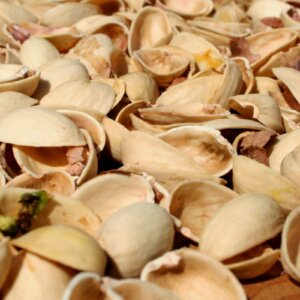

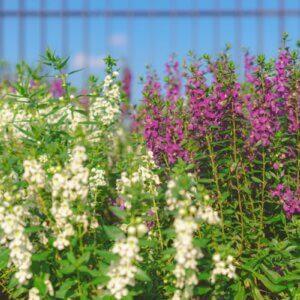
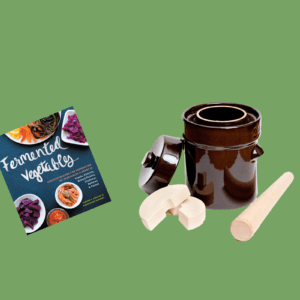

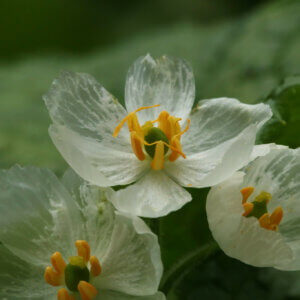
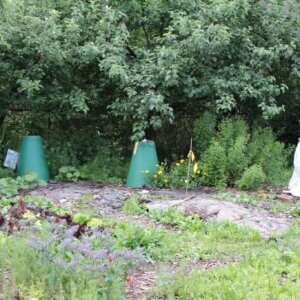
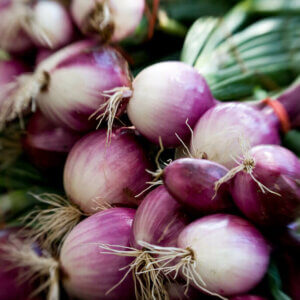

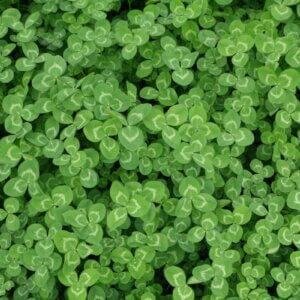
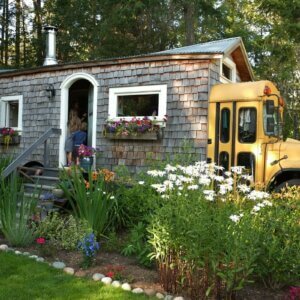

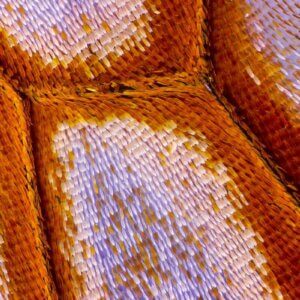
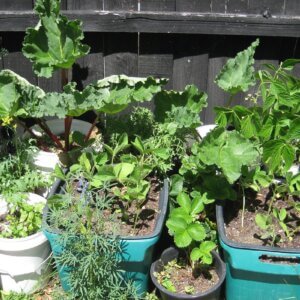
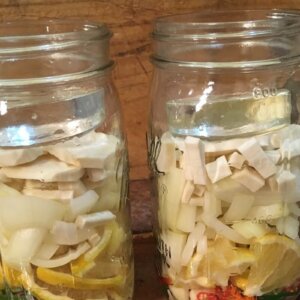
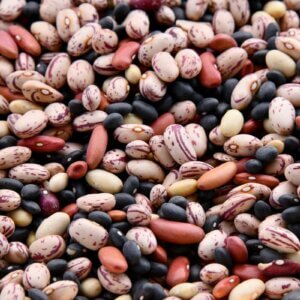
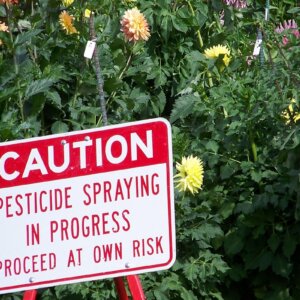
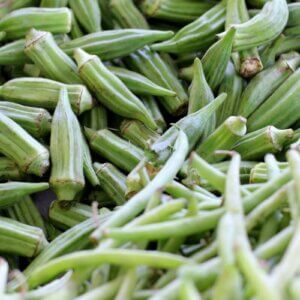

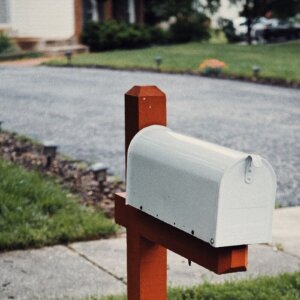
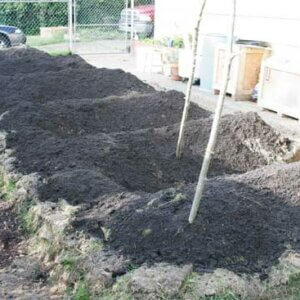
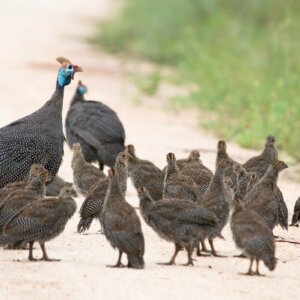
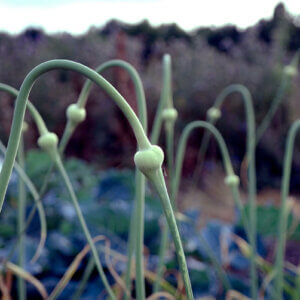

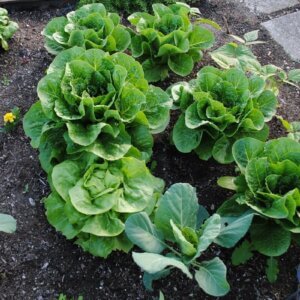


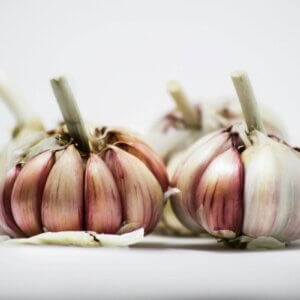



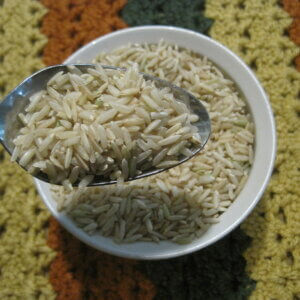
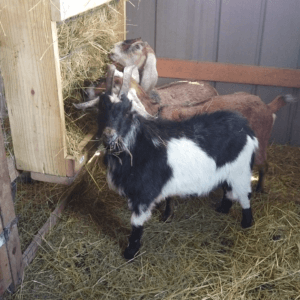
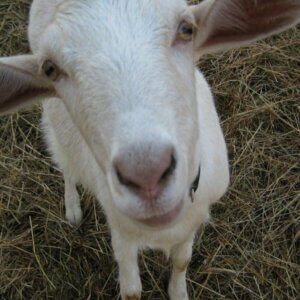


Any way you can post pictures of the finished product? The beds with the clover growing around them? bc
Absolutely, we’ll have a few follow-up posts through out the summer. Keep an eye on our facebook page at https://www.facebook.com/pages/Seattle-Homestead/184190984956180 – that’s where we post lots of pictures that don’t get their own blog post.
I have been doing something almost like this in my garden for years. I am in the southeast, so don’t have raised beds they dry out too quickly. I have the clover planted in the paths between my planting beds. Works great, and looks wonderful.
Thanks Tamra, good to hear that you don’t have trouble with the clover spreading too much. That’s been the #1 concern with this method. If you have some pictures please feel free to post them on our wall at https://www.facebook.com/pages/Seattle-Homestead/184190984956180.
it creeps into the beds a little, but I just pull it out and use it as mulch.
I’m going to try this, but with the pink clover that grows here naturally. Thanks for the tip!
Good luck Shani! We’d love to see pictures once it’s done. Be careful with red clover though, depending on the type that can be a few feet high and could shade out other plants. Part of the reason I chose white clover specifically is that it only gets 6 to 10 inches high.
I just found this post throug the archives of another blog and it’s making me think about clover for my front yard. We have horrible clay soil on a tiny city lot and my only planting space is the front lawn. I set up a raised bed and have dug in a few small beds on the edges of the lawn but am struggling with the poor soil. The lawn is uneven and grading/smoothing it would have to be by hand, so I’m trying to plant in the ground rather than figure out how to get raised beds to sit flat, but it’s all a mess…
Do you think I could plant my yard in clover? I’d be willing to do the work of tearing out the grass and planting clover if it means easier digging for new beds and better soil in the future!
Hi Dawn -I scattered white clover in some hardpan areas of our yard one year, and it did a fabulous job of “greening” the area and improving the “soil” -two or three years later, there are no more bare patches. I am a fan of a higher than normal concentration in lawns as well, it is a fantastic plant for improving soil quality. And I have friends who grew up with all-clover lawns and loved them. You can always overseed with grass over a few years if you change your mind.
Thanks for the advice! smile emoticon I am going to try it out and see how it goes – it can’t be worse than the dandelions and bindweed currently edging out the grass!
So how did it work out? Did it get too invasive? Just ordered a pound for our garden. Thank you!
Thank you. We’ll be encouraging people to replace turf grass.
Do you have to replant the clover each year?
I have been planting the Dutch White clover in any disturbed area mole and dog digging areas of my lawn trying to displace grass. It has been very successful even on my very sandy soil. I don’t mow super short so I’m able to enjoy the white flowers between mowings. Easy to pull out at flower bed edges. Love it!
I love, love, LOVE having clover scramble all through out my ornimental beds along with the flourishing strawberry runners. The bees love it, butterflies and even the dragonflys drop by. My mostly perannial gardens are very “cottage” in nature and live happily together with the clover and berries. I’m feeding the soil, bees and nature in general.
Photo/Attachment:
This is the first year i tried crimson clover in my flower beds around the house. It grew very tall and i didn’t cut it back when young (live and learn!) But now after flowering, it’s starting to look messy with patches browning. If i cut it back, will i lose the nitrogen benefit? What do you do with your clover at the end of the season?
I am trying to grow a clover lawn. The soil is bad I have lots of moss but when the yard was airaeted clover came up like crazy. will this clover take over for me and replace the lawn as a clover lawn? By the way the weeds also came up. will the clover choke it out?
Clover withstands dogs playing in it too, And oh my, all the little wild life creatures love it.
any problems with the plants getting into the neighbours yards…I live in a trailer park..some have nice lawns…mine not so much..haha…it wouldn’t be right next to any lawns…
Hi Marlaine – yes, definitely. Clover is kind of known for spreading a bit via wind, birds, or whatever else. I wouldn’t be surprised if it shows up in neighbor’s yards, and some people don’t like clover.
I love white and crimson clover as a companion for my fruit trees, in addition white clover keeps short so it doesn’t compete with fruit tree in my honest opinion.
So Kane, that was a few years ago… got an update on the results? plus and minuses? unexpectedes? ox
Yes – we still keep plenty of clover around the yard, but I don’t rely on it to fully keep out the weeds. It tends to be a little too thin to block persistent grass, but it seems to keep out the opportunistic weeds that occur on bare dirt. If you’re looking for a perfect yard of clover – may be hard to do. If you’re looking to improve a field or an area that doesn’t have to be 100% clover, it’s a great fit.
I have weeds coming into the garden currently. The plants have been in the ground for 8 days so far. Does anyone know if it might be too late to spread the clover in Ohio? I did this several years ago and it worked well, not sure why I haven’t done it again.
Hey Chuck, you should be fine to still plant seeds, but they’ll probably have a harder time in the heat of the summer. But – they won’t block out those weeds – you’ll still need to pull some now and again. We found that they somewhat slowed new weeds, but definitely didn’t stop them.
I love this article. Great to know someone else likes clover as much as I do. I have a very large space, like a meadow around my garden in clover and I like to graze my chickens in a chicken tractor all around the clover, double nitrogen. Well anyways keep up the great articles.
You’ve came up with a very good way to keep your garden from some weeds. I find white clover pretty as well, so it’s the perfect decision for those who want to improve their yard with natural decisions.
I’m in the Seattle area as well and stumbled on this while looking for alternatives for mulch for my raised beds. I just started them this year so there’s lots of empty soil that gets dried out and hardens. I see in the factoids that slugs like going after clover. Will that keep them away from other things? I have slugs and those buggers can be annoying. 🙂
We never experienced any pests going after the clover itself, however it definitely won’t stop pests like slugs. If you’re looking for total weed block, you’ll have better luck with mulch, but both will still allow a few weeds through.
I have a question for you
How about pH degree can I grow clover?
I have clover that planted itself under a couple rose shrubs. Recently the leaveson my roses dried up and turned brown. None of my other roses (without clover) did this. Is the clover bad for my roses?
Hmm – I suppose it’s possible that the roses were getting too much Nitrogen, but I would sooner guess that they’re just dry, especially if you’re just talking about a modest amount of clover.
Hi,
I have been searching for information on micro clover to use between rows in peony field and around the peonies for weed prevention. Do you know if they will harm the peonies since peony roots are close to the surface? Compete for nutrients? what nutrients does clover use up?
The next time someone asks if clover is a weed, tell them it was once accepted as a healthy part of every suburban lawn. Here’s an except from a piece in the Boston Globe by Ralph Ranalli titled “Once again, clover is a good thing” (June 24, 2007):
Once a prized ground cover and grazing material for animals (clover contains more protein than other grasses), clover was no match for the marketing forces of lawn chemical companies who rebranded it as a noxious weed in the years after World War II.
But that thinking is slowly changing, lawn-care specialists say.
In the 1940s, clover was considered an acceptable part of the suburban lawn. It made sense, because clover and most lawn grasses enjoy a good relationship. Unlike grass, which greedily sucks the crucial nutrient nitrogen out of the earth and can reduce rich topsoil to moon dust in a matter of years if left to its own devices, clover takes its nitrogen from the air.
The clover fixes the nitrogen from the air in the soil around it, where it can be used by the grass growing nearby. When it dies or is cut and mulched, clover becomes a nice bit of nitrogen-rich compost, just like other grass clippings.
Then, in the late 1940s, along came 2,4-dicholorophenoxyacetic acid , a chemical weed killer that was hailed as a breakthrough and became a component of herbicides ranging from the Vietnam War era’s infamous Agent Orange to current popular home-use brands such as Roundup and Halts .
“Clover was part of the traditional lawn,” says Bill Winter , the longtime lawn-care buyer at Russell’s Garden Center in Wayland. “Then we started the whole better-living-through-chemicals thing. They discovered that the new herbicides also killed clover, so the herbicide had to be a good thing and clover became a weed.”
My yard is a biohaven for white clover, sorrel, violets, wild garlic, and a plethora of other flora. Everything gets a chance. Hubby mows as little as possible; everything is green.
Our kitty delights in his crabgrass; much of our lawn ends up in the salad bowl. No chemicals — EVER!
I’ve told the veterinarian/columnist/environmentalist, Dr. Michael W. Fox, that we practice suburban civil disobedience. While neighbors mow & mow, we let it grow. When they sprayed, I stood by wearing a spray mask & deflected with a large sheet of cardboard. They have been warned: Next time I’ll bring out a large fan!
They must water and water; burn spots show up now & then. Their kids & dogs play in that crap. Thank goodness they put up a fence. Still, I won’t let my cat near the property line!
Biodiversity starts in our own backyards. Don’t expect it to be somewhere “out there”. Today’s kids and tomorrow’s grandkids need it NOW!
What do you do when it’s time to seed new veggies? Doesn’t the height of the clover block sun so your seedlings don’t want to come up?
Some clovers (particularly red clover if I recall correctly) are pretty tall – 12-24 inches, so this would be a problem. This white clover is more like 4-8 inches tall, so if you want to get something planted, it’s easy to rip out a 1-2 foot circle of clover in that spot, toss it in the compost, and dig whatever size hole you need to plant.
What do you do when it’s time to seed new veggies? How do they get light so they can sprout?
I have accumulated clover in my lawn over the years and I find it attractive But the down side is it attracts honeybees. Now I have to wait to later in the day after the bees go home to mow my lawn because I don’t want to kill the bees.
Hi, How long before planting veggie transplants do you need to sow the seeds of the clover?